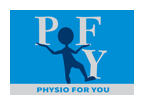Lipoedema, is a hereditary disorder, which leads to a pattern of abnormal adipose tissue accumulation affecting the thighs, buttocks and lower legs, and sometimes the arms. Lipoedema may cause considerable tissue enlargement, swelling and pain. It might significantly impair mobility, ability to perform activities of daily living, and psychosocial wellbeing. It has been shown to affect up to 11% of Australian women.
Symptoms of Lipoedema
- The legs are enlarged bilaterally – arms too can be affected
- The waist is small in proportion to thighs, buttocks and legs
- Feet and hands are exempt and a ‘bracelet’ effect can appear just above the ankles and wrists
- Legs/arms can be extremely painful, even to touch
- Bruising is commonly seen in the affected limbs and can occur spontaneously and often unexplained
- The fat is soft to touch and wobbly, while skin can be cold to touch
- Lipoedema can become worse in hot weather
- Diet and exercise, while important, can have minimal effect
- Increase in Lipoedema is often noticed when significant hormonal changes happen such as puberty, pregnancy and menopause
- Skin can have a cellulite or ‘mattress’ like appearance
- Deep throbbing pain in the legs with pain in the knee joints
- Legs feel heavy and swell throughout the day but resolve overnight
Diagnosis
If you think you might have Lipoedema you should consult your Physiotherapist or Doctor for a thorough assessment.
A diagnosis of Lipoedema is made on clinical grounds that are based on the history and examination of the patient. Currently, there are no known blood or urine biomarkers, nor are there any specific diagnostic tests or scans for Lipoedema.
Treatment
Lipoedema cannot be cured, however it can be managed. Each aspect of treatment needs to be tailored to the individual according to the severity of symptoms, degree and complexity of tissue enlargement.
Conservative treatment can include:
- Calorie controlled low inflammation diet
- Maintenance of a healthy weight/BMI,
- Skin care and protection (e.g. regular moisturising cream)
- Regular low impact daily exercise such as yoga, aqua aerobics, walking and vibration pilates
- Manual lymphatic drainage (MLD) therapy – MLD therapy is a light skin stretching massage that helps promote the movement of lymphatic fluid out of the swollen limb.
- Customised lipoedema compression garments
- Management of pain
Surgical treatment is also an option where abnormal lipoedema tissue is removed via liposuction. Please be aware that liposuction will provide a form of control and slow the disease progression but is not a definitive cure.
How Physio For You can help
Our team at Physio For You has therapist who specialise in the assessment and management of lipoedema. These therapists are able to create safe, effective and individualised treatment programs to aid with your management of lipoedema. The therapist takes into account your medical history, personal health, fitness goals, exercise ability and any other relevant information. This results in faster outcomes, effective management for the symptoms of Lipoedema as well as a healthier lifestyle.
Health Rebates
You may consult a physiotherapist or accredited exercise physiologist either directly or by referral from your medical practitioner. Most private health insurance funds offer rebates for Physiotherapy/Exercise Physiology treatment. Physio For You offers on-the-spot HICAPS claiming.
Some patients are eligible for Medicare rebates for Physiotherapy/Exercise Physiology from their GP, contact us for more information.
For more information:
If you have any questions regarding Lipoedema please contact our clinic on (02) 4392 1547.
You may also visit the Lipoedema Australia website at https://www.lipoedemaaustralia.com.au/




By: Kyrah Tos

